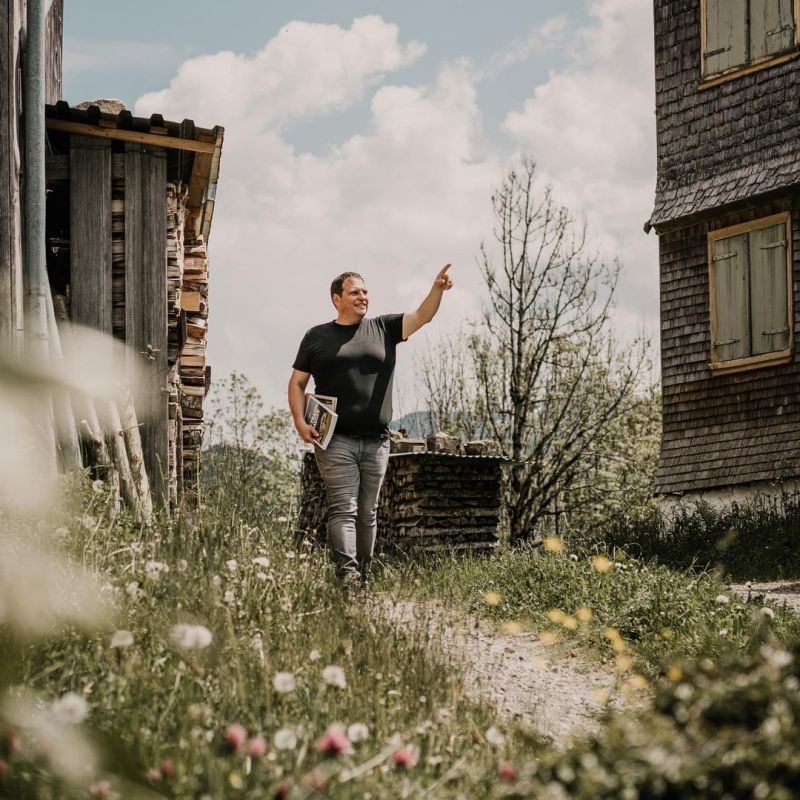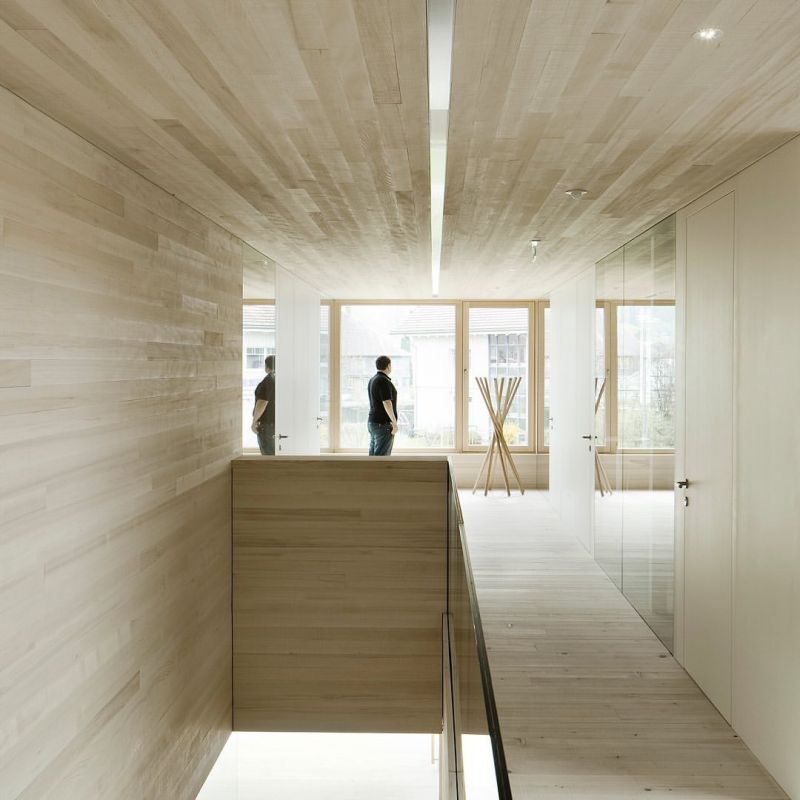JOIN the AFICIONADOS
Get the insider news and lowdown on what we've been up to, where we've been, and who we've met along the way. Be the first to discover new places and get the scoop on our favourites.
The vast majority of our alpine hotels and guesthouses have a close, natural and logicalrelationship to timber, used widely for both construction and interior fits. These wooden elements are sourced from surrounding woodlands, continuing the tradition of generations. Of course, this is not only sustainable; its intelligent use engages with a complex cycle of forestry and carpentry. Wood and timber construction is once again a go-to material, and creativity permits wood to be used in greater formats, not least for the construction of taller buildings.
In Austria’s Bregenzerwald, there are a plethora of new architecturally stunning buildings, pockets of high design ethics with relationships to its past and future. Local construction businesses are flourishing, helmed by innovative and inspirational ‘Bau’ projects. Jürgen Haller is one such builder creating a series of residential and hotel projects – each with his definitive ‘timber’ hallmarks.
In addition to your sense of aesthetic design, is it your careful handling of wood that distinguishes your projects?
Inevitably, craftsmanship and tradition determine the identity of the building. Clear in the design language and deeply rooted in tradition, this is the only way we can fill our wooden buildings with soul. The forest and wood in our buildings run through all areas because the sensual quality of the mostly untreated, regional building materials gives the building a homely atmosphere and a unique living experience.
What is it that inspires you about wood?
Wood has a special fascination for me. It is a unique material that embodies natural beauty, warmth and authenticity. It can be used in many different forms and offers endless design possibilities. In doing so, it creates a connection to nature and conveys a feeling of permanence. The interplay of aesthetics, functionality and sustainability is what inspires me about wood and drives me in my work as a builder.
Where is it sourced from?
Basically, we mainly use wood that comes from the surrounding area. However, the origin of the wood depends on various factors, including the preferences and requirements of builders and craftsmen.

A concrete example with local wood is Tempel 74, where we sourced the wood for the windows from the Mellental. This decision not only allowed us to use high-quality, local materials, but also to work closely with regional craftsmen and suppliers.
What do you think of sustainable practices in construction?
Sustainable practices in construction are of great importance to me. As a renewable raw material, wood is an 'all-rounder' between nature and technology: it is materialized solar energy, carbon dioxide storage and universal building and material. It is one of the oldest building materials in the world and scores with technical, economic and design possibilities.

 If wood is your preferred material, which one is your other? And why?
If wood is your preferred material, which one is your other? And why?
For these reasons, wood is my preferred material that meets the requirements in terms of aesthetics, sustainability and versatility.
If you could build anything out of wood, what and where would it be?
In fact, we already had the opportunity to build Tempel 74 in Mellau in 2019. It was an inspiring and intensive project in which I was able to incorporate my passion for wood into the design.
Wood has many holistic values - is that something you grow up with in the Alps - do you sleep better?
Wood gives a homely feeling, you feel safe because wood creates a warm and pleasant atmosphere. The scent of wood is also something special, has a calming effect and, in combination with the refreshing mountain air, certainly has a positive effect on sleep patterns.
How many carpenters were employed at the hotel apartments Tempel 74?
8 -10 carpenters
The Bregenzerwald is a pioneer in architecture - why do you think that is?
Vorarlberg builds differently. Architects and craftsmen create surprisingly modern things. Works of simple elegance, with special sensual qualities. Today's architectural style is based on traditional knowledge and skill that is constantly evolving. Hardly any other region in the world has such a density of high-quality timber architecture and places old and new building culture in a harmonious relationship.
Just as high as the demands on design are those of energy efficiency and sustainability. Vorarlberg's extraordinary timber architecture is now known far beyond its borders.

As a family man, do you think there is hope for our environmental impact ?
Although the challenges in terms of environmental pollution and climate change are great, I also see a growing shift in awareness and increased action on a global scale. In addition, education and awareness-raising play a crucial role. By educating our children and future generations about the importance of environmental protection and encouraging them to make sustainable choices, we can create positive change.
As a hotelier - what advice would you like to give to guests about the region and your concept?
Tempel 74 is the right address for guests who appreciate the subtlety and obstinacy of the Bregenzerwald. We want people to go on holiday where we live and work and let them participate in our way of life.
How many people have you asked to design their house?
We work on about 15-20 projects a year, but some of them can take 2-3 years – depending on the size and circumstances.